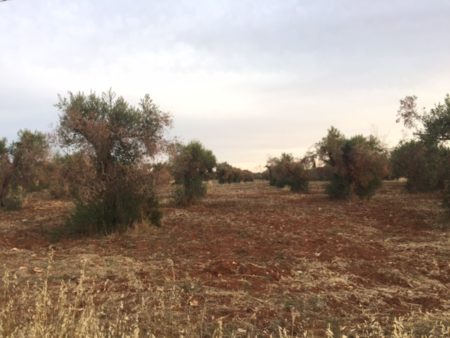BTW, if you want to see what that “olive plague” we blogged about a few days ago looks like, here’s a despatch from the front lines by our intrepid photojournalist on the spot, Layla.
Incidentally, my attention has coincidentally recently been drawn to the Bioresources For Oliviculture (BeFOre) project (emphasis added):
The project aims at establishing a multi-lateral network of research and innovation staff active in OLIVE germplasm access, conservation, evaluation and exploitation, strengthening research capacities through the exchange of knowledge and expertise on a shared research programme focused on establishing integrated common protocols to phenotype and characterize plants at molecular, morphological and physiological level, and evaluating the olive oil quality related to varieties. Particular attention will be paid at establishing the international intellectual property rights for conserving and exchanging the olive genetic resources. The involvement of some Non Academic Organizations will allow the sharing of knowledge and ideas from research to all levels of the olive production chain, from plant propagation to fruit production and oil extraction (and vice-versa).
The bit about IPR is important because olives are not on Annex 1 of the International Treaty, at least for now, and one of the deliverables of the project is:
Core set of genotypes present in the main olive cultivar collections and grown under different agro-environmental conditions to evaluate their agronomical performance
Hopefully some of those genotypes are going to be of use against Xylella, either directly or through breeding.
